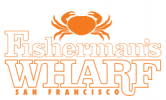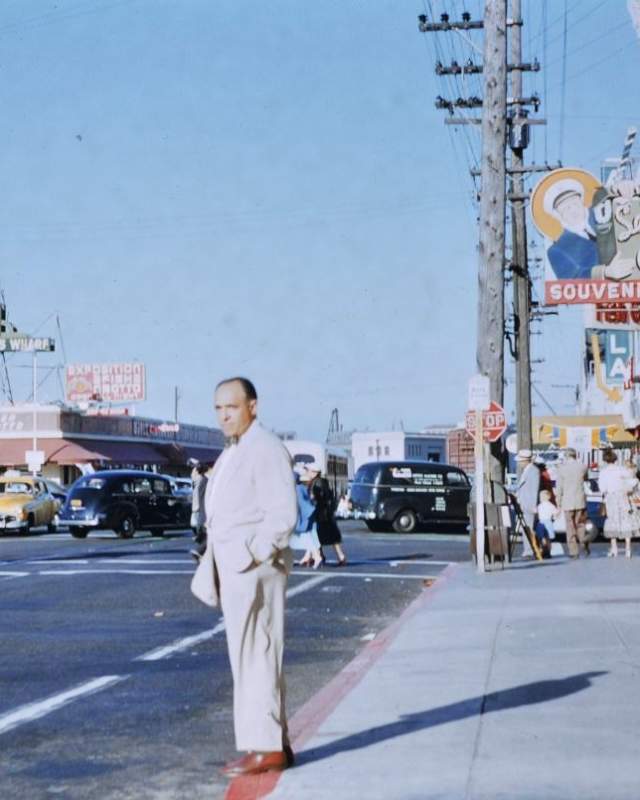wharf history
One of the great pleasures of visiting San Francisco is a stroll along this city’s historic Fisherman’s Wharf. Here visitors can peer down at the fishing crafts riding in the calm water, or pause to watch fishermen mending a net. Most of the boats in view belong to a "third generation" of fishing craft, which have made history at Fisherman's Wharf.
From the days of the Gold Rush until the turn of the century, the San Francisco fishing fleet was composed of lateen-rigged sailboats. They were copies of the craft which the Italian fishermen knew in their native land. Green was the prevailing color of the tiny boats, and the name of a patron saint appeared on the hull. The fishermen themselves were as colorful as their craft. Their natural talent for song was to be heard in renditions of arias from Verdi, lusty if not always true to the ear. In the fog-shrouded waters outside the Golden Gate, the singing was a means of communication. You could not see a companion boat, but you knew it was there.
The "second-generation" of fishing boats came with the introduction of gasoline engines; small but dependable "put-puts". What became known as the Monterey Hull boats came into general use. The gas engine made it possible to fish more days of the year, gave a wider range for their operation in the ocean water and provided power to haul in the nets or lines.
Even today, several hundred of the Monterey-type boats remain as a part of the fishing fleet. Often likened to the "vintage" automobiles of the Model-T era, the Monterey Hull craft ride at harbor alongside a "'third generation" of commercial fishing boats; diesel-powered craft which overshadow them in size; cruising capacity and are often equipped with two-way radio telephones and "sonar" depth-finders.
Fishermen used to get their news about the weather from nature instead of a radio or television report. If the moon was in the east, the tide was coming in; or if in the west, the tide was flowing out the Golden Gate. A circle around the moon meant rain. Porpoises playing around the boat indicated a bad wind was brewing.
Old timers around Fisherman's Wharf have other tales to tell, recalled from the period of the last sailboats. It was hard work. If the boat was becalmed, they waited long hours for a breeze, or got out the oars and rowed. Sometimes they would throw a grappling hook into the rudder chain of a passing steamer and get an easy ride home. When the steamer crews called out imprecations against these marine hitchhikers, the Italian fishermen screamed right back in words that soon became a part of waterfront "lingo".
In those earlier periods, the favorite fishing spots were outside the Golden Gate, just beyond the waves breaking on the rocks and sandy beaches. It took great skill to manage the boats so they did not drift ashore and be wrecked. In terms of money, the rewards were very low, if today's standards of value are to serve as a measure. The average fisherman made $2 or $3 a week, sometimes as much as $5. But, on the other hand, a loaf of bread could be bought for less than five cents, and good red wine came from grapes that could be purchased for $5 a ton.
Today, as in the past, it is the fishing fleet, operated by the grandsons and great-grandsons of these past generations, which make Fisherman’s Wharf a place of activity; the center of an ocean-oriented industry beloved by native San Franciscans and visitors alike.
History Lives On At Fisherman's Wharf
San Francisco’s Fisherman’s Wharf is proudly unique among the scenic waterfront attractions of the world. The Fisherman’s Wharf of today rests on land created from the rubble of buildings destroyed in the earthquake and fire of 1906. What could not be destroyed was the love of the sea, generations of fishing skills, and traditions expressed in good things to eat and drink.
Many of the well-known sights of today were developed only in the last few decades. The original Meigg’s Wharf was once the main port of entry to San Francisco and an extremely industrious place. Lumber, food, and immigrants all arrived here, and railroads came right to the water’s edge to pick up building supplies for the rapidly growing city. Hardworking fishermen, both Chinese and Italian (who were often accompanied by their wives), set out to make a living by catching fish and crab in small vessels at the wharf.
It is the heritage of these early fishermen, which contributes to today’s color blending of the old and the new at Fisherman’s Wharf – the center of an ocean-oriented industry beloved by native San Franciscans and visitors alike. Today, as in the past, it is the fishing fleet that gives Fisherman’s Wharf its authenticity and activity.
RECOMMENDED BOOKS
- San Francisco's Fisherman's Wharf (CA) (Images of America)
by Alessandro Baccari - San Francisco's Little Boat that Could
by Bud Galli - The Barbary Coast: An Informal History of the San Francisco Underworld
by Herbert Asbury - San Francisco's Lost Landmarks
by James R. Smith - Historic San Francisco: A Concise History and Guide
by Rand Richards - Historic Photos of San Francisco
by Rebecca Schall - San Francisco Then and Now (Then & Now Thunder Bay)
by Dennis Evanosky - San Francisco Then & Now (Then & Now)
by Bill Yenne - Ferries of San Francisco Bay
Arcadia Publishing - "Crab is King": The Colorful Stories and the Fascinating History of Fisherman's Wharf in San Francisco.
by Bernard Averbuch
Did you know?
The opening of Crab Season in November is a festive occasion. A century ago, Chinese fisherman and Italians with their lateen-rigged Genoese sailboats, found crabs in plentiful supply from the Straits of Carquinez on the inland reaches of San Francisco Bay to the sandy shorelines off the East Bay. Over the years, clams, the natural food of the crab, disappeared from the Bay. The best crab catches were made just outside the Golden Gate. Now "crabbers" must drop their crab pots far out near Farallon Islands in 18 to 35 fathoms of ocean water. The best time to buy fresh and seasonal crab at Fisherman's Wharf is November - July.








